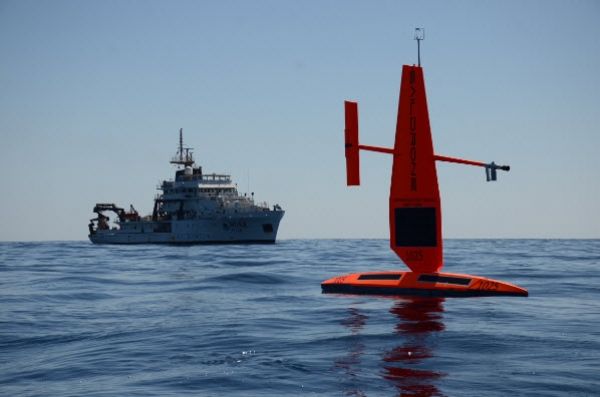NOAA Fishery Survey Vessel Reuben Lasker and a small fleet of unmanned, instrumented saildrones wrapped up nearly 5 months of research this week after crisscrossing waters off the West Coast in a landmark survey of species ranging from krill and anchovies to whales. Scientists also collaborated with Saildrone, Inc.The previous link is a link to Non-Federal government web site. Click to review NOAA Fisheries disclaimer to test the unmanned surface vehicles as an affordable way to augment ship-based sampling.
Scientists will be analyzing data from the 2018 California Current Ecosystem Survey for months to come. The effort successfully tested new technologies while also gathering population and distribution data for marine mammals and seabirds, as well as their migratory prey such as krill, sardines, and anchovies.
“This was the first survey of its kind off the West Coast in terms of looking at all these species at once,” said Jeff E. Moore of NOAA’s Southwest Fisheries Science Center in La Jolla, California. Moore led the marine mammal portion of the survey. “We’ll be able to study in some detail the association of different marine mammals with prey, and get a better understanding of how predators may be affected by changes in the prey landscape.”
NOAA Fisheries conducts regular stock assessments to gauge the populations of multiple species of fish and their natural predators off the West Coast, and ensure that fishery harvest levels remain sustainable. Separate surveys normally are used to target predators and prey, but in this case scientists used Lasker’s sophisticated echo sounders and other technology to gather data on several commercially and ecologically important species at once.
Continue reading at NOAA.
Image via NOAA.


